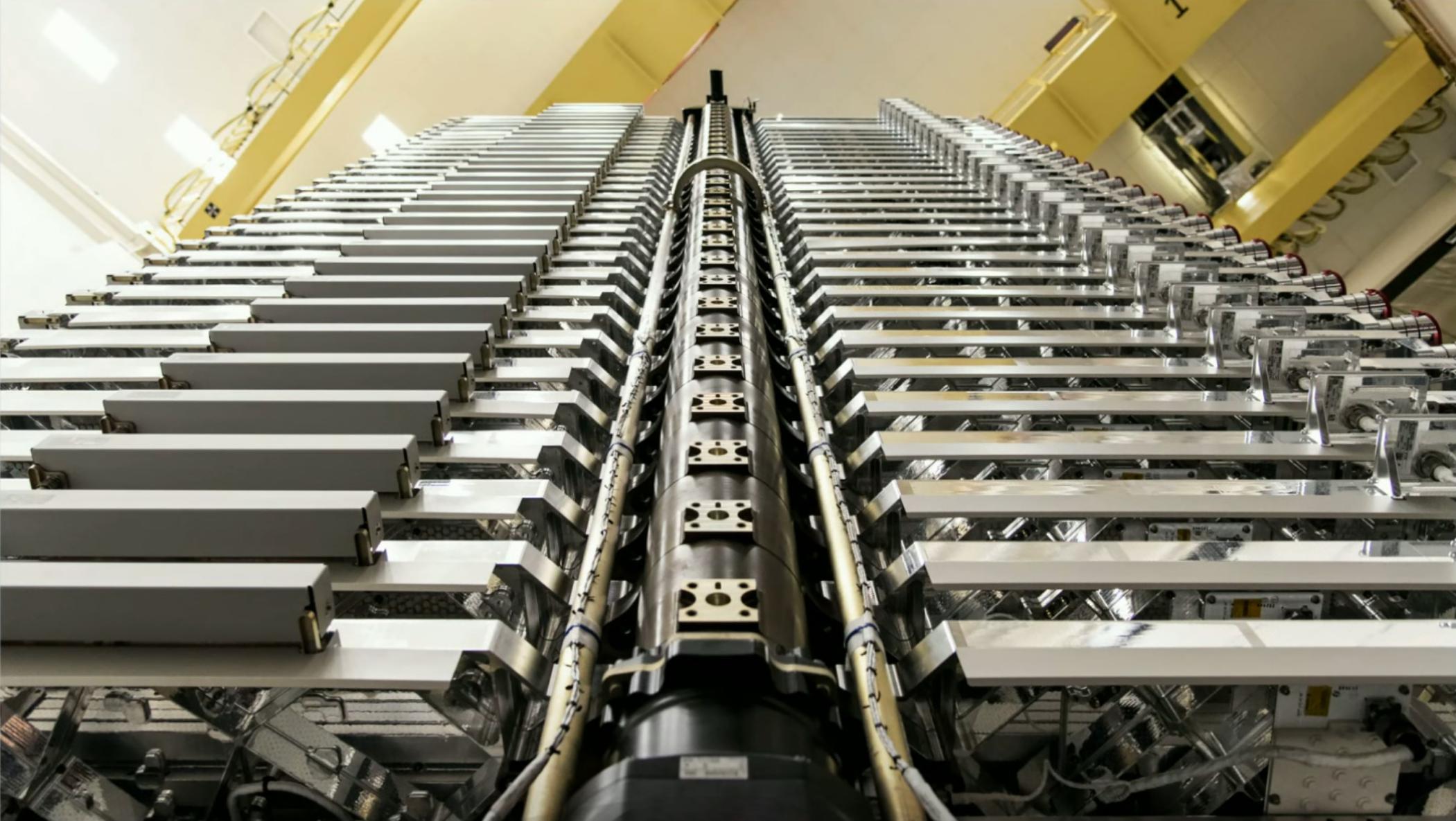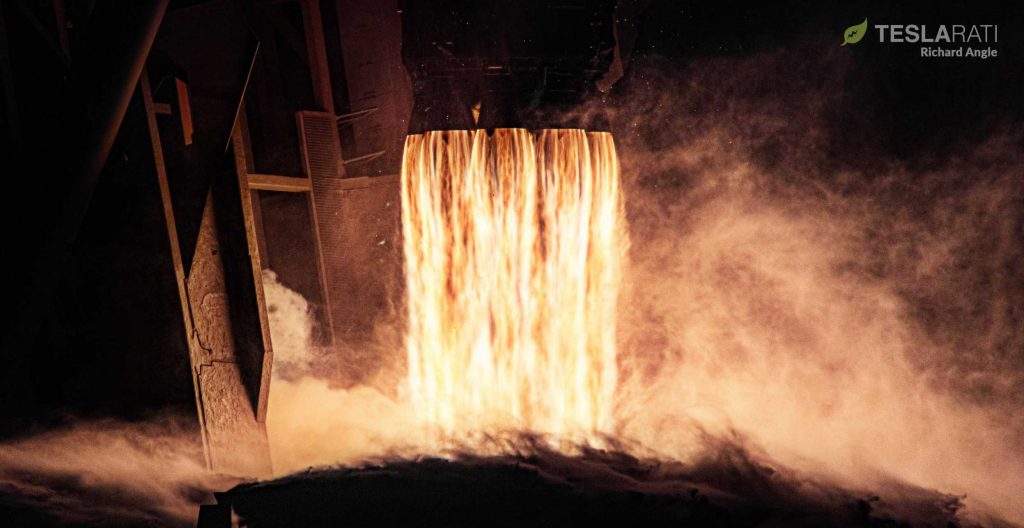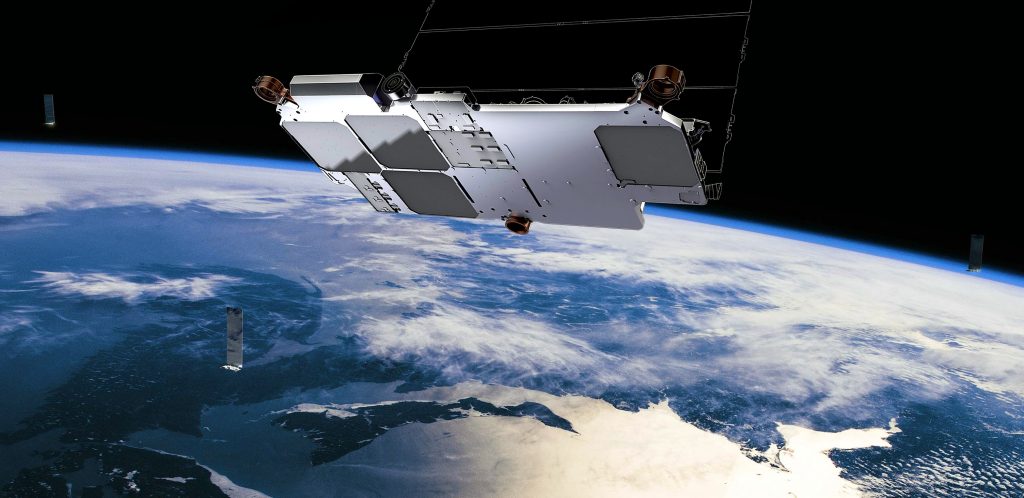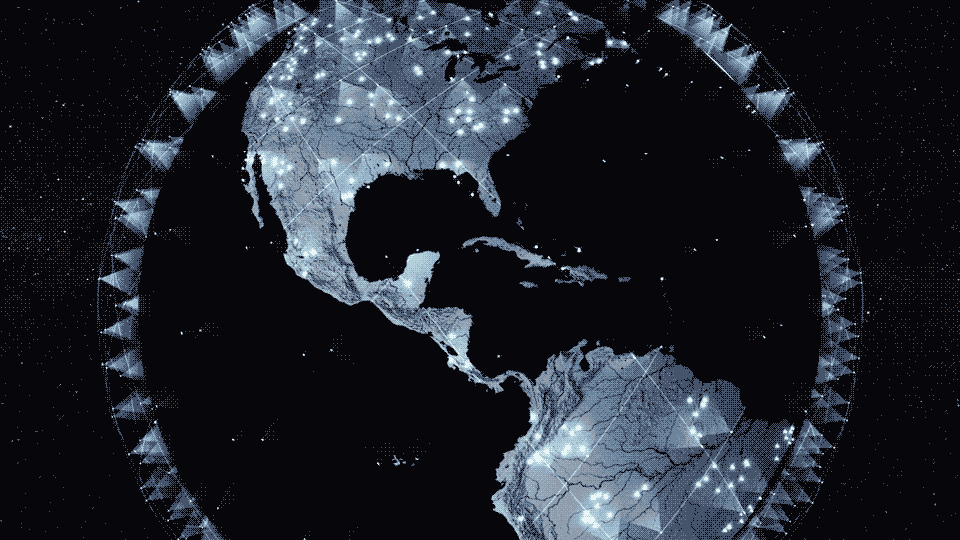

News
SpaceX "DARKSAT" results: can Starlink and astronomy happily coexist?
Astronomers have begun to gather and analyze detailed observations of a SpaceX Starlink satellite prototype officially labeled DARKSAT and the initial results hint that the satellite constellation should be able to happily coexist with ground-based astronomy in the future.
Since SpaceX began launching batches of 60 Starlink satellites in May 2019, the company has raised the ire of parts of the astronomy community and simultaneously awed and inspired many less technical observers with clusters of shooting star-like satellites that are easily visible after launches. While the mid-sized spacecraft do become much dimmer as they raise their orbits from ~300 km (185 mi) to 550 km (340 mi), they are far from invisible even at that operational altitude. It’s safe to say that the current impact on ground-based astronomy is still just shy of negligible even with 360 satellites in orbit, but that impact is assuredly greater than zero and the relatively bright spacecraft have already interrupted telescope observations at many sites around the world.
Given that the 360 satellites already in orbit are just a tiny fraction of the ~4400, ~12,000, or even ~40,000 that SpaceX could one day launch, it would be irresponsible to argue that the constellation’s impact – and the impact of others like it – will continue to be minor as the number of satellites grows. Thankfully, while it doesn’t appear that prospective low Earth orbit (LEO) constellation architects anticipated the potential astronomy impact, SpaceX’s Starlink team has rapidly responded and already launched a satellite featuring tweaks designed to dim its appearance from the ground. For several reasons, the initial results from “DARKSAT” are extremely promising – now visible below in some of the first photos offering a useful comparison.
Launched on January 7th, 2020, a set of 20 spacecraft including DARKSAT – representing a single “plane” of the broader Starlink constellation – all arrived at their operational ~550 km (340 mi) orbits by February 23rd. As previously discussed on Teslarati, initial results first published on March 18th revealed that the Starlink DARKSAT prototype – essentially an early alpha test for darkening techniques – was already 55% darker than unmodified spacecraft. While making satellites less reflective makes thermal management a much greater challenge, DARKSAT has managed to raise its orbit and begin operations without issue, although it’s unknown whether the satellite’s antennas and avionics are also functioning nominally.

For darker spacecraft, perhaps the most important test will be long-term reliability, as constantly absorbing more heat than a reflective satellite is likely to put their structure, avionics, and radiators through significantly more thermal stress. As such, SpaceX may launch a limited number of additional darkened prototypes over the coming months but is much less likely to darken all satellites on any given launch until DARKSATs have successfully operated in orbit for months or even years.
On the ground, SpaceX may try to perform sped-up stress testing, but proving that darker satellites are a viable solution will almost invariably take time. Earlier this month, CEO Elon Musk revealed that SpaceX may attempt to design deployable solar shades for Starlink satellites if darkening their bodies is not enough to fully mitigate major impacts to astronomy. Knowing SpaceX, the first in-orbit solar shade test(s) could happen during any of several upcoming Starlink launches.

Adding reliable, deployable solar shades without appreciably raising Starlink’s production costs could be a major challenge, given the fundamental complexity of large, deployable mechanisms in space, but SpaceX – if anyone – is likely up to the challenge. More importantly, the fact that SpaceX’s very first attempt at reducing Starlink albedo (reflectivity) has produced a satellite 55% darker than its peers suggests that much more can probably be done along those lines, given additional time for extra experiments and deeper optimization.
As a result, it may be the case that SpaceX ends up launching 750-1000+ reflective Starlink satellites before an affordable, mass-producible DARKSAT variant is ready to take over. In that event, Starlink could plausibly have a small to moderate negative impact on ground-based astronomy for several years. However, comments made by SpaceX executives over the years suggest that no single Starlink satellite is likely to operate for more than five or so years before being replaced, meaning that the entire constellation would be continuously refreshed (as long as it’s generating revenue). Even if a thousand bright(er) Starlink satellites make life a bit harder for some astronomers, the fact remains that the consequences of any single Starlink satellite variant – assuming SpaceX remains serious about fully mitigating the constellation’s impact – are inherently temporary.

If SpaceX continues to make progress darkening satellites and developing cheap solar shades, it seems all but guaranteed that even a constellation of tens of thousands of Starlink satellites will be able happily coexist with the astronomy community, all the while delivering cheap, fast internet to millions of people – especially those lacking access – around the world.
News
Tesla begins Robotaxi certification push in Arizona: report
Tesla seems serious about expanding its Robotaxi service to several states in the coming months.

Tesla has initiated discussions with Arizona transportation regulators to certify its driverless Robotaxi service in the state, as per a recent report from Bloomberg News. The move follows Tesla’s launch of its Robotaxi pilot program in Austin, Texas, as well as CEO Elon Musk’s recent comments about the service’s expansion in the Bay Area.
The Arizona Department of Transportation confirmed to Bloomberg that Tesla has reached out to begin the certification process for autonomous ride-sharing operations in the state. While details remain limited, the outreach suggests that Tesla is serious about expanding its driverless Robotaxi service to several territories in the coming months.
The Arizona development comes as Tesla prepares to expand its service area in Austin this weekend, as per CEO Elon Musk in a post on X. Musk also stated that Tesla is targeting the San Francisco Bay Area as its next major market, with a potential launch “in a month or two,” pending regulatory approvals.
Tesla first launched its autonomous ride-hailing program on June 22 in Austin with a small fleet of Model Y vehicles, accompanied by a Tesla employee in the passenger seat to monitor safety. While still classified as a test, Musk has said the program will expand to about 1,000 vehicles in the coming months. Tesla will later upgrade its Robotaxi fleet with the Cyercab, a two-seater that is designed without a steering wheel.
Sightings of Cybercab castings around the Giga Texas complex suggests that Tesla may be ramping the initial trial production of the self-driving two-seater. Tesla, for its part, has noted in the past that volume production of the Cybercab is expected to start sometime next year.
In California, Tesla has already applied for a transportation charter-party carrier permit from the state’s Public Utilities Commission. The company is reportedly taking a phased approach to operating in California, with the Robotaxi service starting with pre-arranged rides for employees in vehicles with safety drivers.
News
Tesla sets November 6 date for 2025 Annual Shareholder Meeting
The automaker announced the date on Thursday in a Form 8-K.

Tesla has scheduled its 2025 annual shareholder meeting for November 6, addressing investor concerns that the company was nearing a legal deadline to hold the event.
The automaker announced the date on Thursday in a Form 8-K submitted to the United States Securities and Exchange Commission (SEC). The company also listed a new proposal submission deadline of July 31 for items to be included in the proxy statement.
Tesla’s announcement followed calls from a group of 27 shareholders, including the leaders of large public pension funds, which urged Tesla’s board to formally set the meeting date, as noted in a report from The Wall Street Journal.
The group noted that under Texas law, where Tesla is now incorporated, companies must hold annual meetings within 13 months of the last one if requested by shareholders. Tesla’s previous annual shareholder meeting was held on June 13, 2024, which placed the July 13 deadline in focus.
Tesla originally stated in its 2024 annual report that it would file its proxy statement by the end of April. However, an amended filing on April 30 indicated that the Board of Directors had not yet finalized a meeting date, at least at the time.
The April filing also confirmed that Tesla’s board had formed a special committee to evaluate certain matters related to CEO Elon Musk’s compensation plan. Musk’s CEO performance award remains at the center of a lengthy legal dispute in Delaware, Tesla’s former state of incorporation.
Due to the aftermath of Musk’s legal dispute about his compensation plan in Delaware, he has not been paid for his work at Tesla for several years. Musk, for his part, has noted that he is more concerned about his voting stake in Tesla than his actual salary.
At last year’s annual meeting, TSLA shareholders voted to reapprove Elon Musk’s compensation plan and ratified Tesla’s decision to relocate its legal domicile from Delaware to Texas.
Elon Musk
Grok coming to Tesla vehicles next week “at the latest:” Elon Musk
Grok’s rollout to Tesla vehicles is expected to begin next week at the latest.

Elon Musk announced on Thursday that Grok, the large language model developed by his startup xAI, will soon be available in Tesla vehicles. Grok’s rollout to Tesla vehicles is expected to begin next week at the latest, further deepening the ties between the two Elon Musk-led companies.
Tesla–xAI synergy
Musk confirmed the news on X shortly after livestreaming the release of Grok 4, xAI’s latest large language model. “Grok is coming to Tesla vehicles very soon. Next week at the latest,” Musk wrote in a post on social media platform X.
During the livestream, Musk and several members of the xAI team highlighted several upgrades to Grok 4’s voice capabilities and performance metrics, positioning the LLM as competitive with top-tier models from OpenAI and Google.
The in-vehicle integration of Grok marks a new chapter in Tesla’s AI development. While Tesla has long relied on in-house systems for autonomous driving and energy optimization, Grok’s integration would introduce conversational AI directly into its vehicles’ user experience. This integration could potentially improve customer interaction inside Tesla vehicles.
xAI and Tesla’s collaborative footprint
Grok’s upcoming rollout to Tesla vehicles adds to a growing business relationship between Tesla and xAI. Earlier this year, Tesla disclosed that it generated $198.3 million in revenue from commercial, consulting, and support agreements with xAI, as noted in a report from Bloomberg News. A large portion of that amount, however, came from the sale of Megapack energy storage systems to the artificial intelligence startup.
In July 2023, Musk polled X users about whether Tesla should invest $5 billion in xAI. While no formal investment has been made so far, 68% of poll participants voted yes, and Musk has since stated that the idea would be discussed with Tesla’s board.
-

 Elon Musk1 week ago
Elon Musk1 week agoTesla investors will be shocked by Jim Cramer’s latest assessment
-

 Elon Musk18 hours ago
Elon Musk18 hours agoxAI launches Grok 4 with new $300/month SuperGrok Heavy subscription
-

 Elon Musk3 days ago
Elon Musk3 days agoElon Musk confirms Grok 4 launch on July 9 with livestream event
-

 News7 days ago
News7 days agoTesla Model 3 ranks as the safest new car in Europe for 2025, per Euro NCAP tests
-

 Elon Musk2 weeks ago
Elon Musk2 weeks agoA Tesla just delivered itself to a customer autonomously, Elon Musk confirms
-

 Elon Musk1 week ago
Elon Musk1 week agoxAI’s Memphis data center receives air permit despite community criticism
-

 Elon Musk2 weeks ago
Elon Musk2 weeks agoTesla’s Omead Afshar, known as Elon Musk’s right-hand man, leaves company: reports
-

 News2 weeks ago
News2 weeks agoXiaomi CEO congratulates Tesla on first FSD delivery: “We have to continue learning!”

















